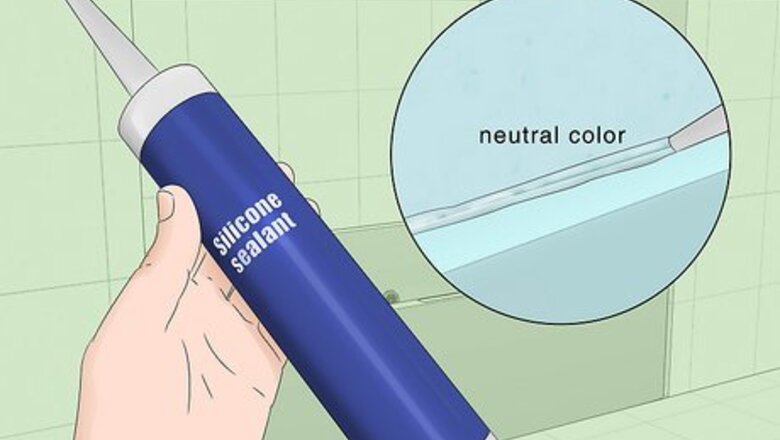
views
Preparing the Surface
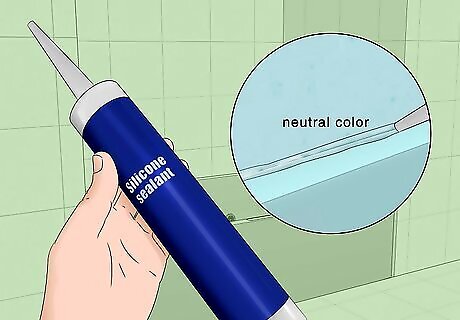
Use silicone caulk if you need a neutral-colored waterproof sealant. There are two main types of caulk – silicone and acrylic latex. Silicone caulk is a completely waterproof and flexible sealant. It will bond with a lot of different kinds of surfaces. Silicone is a good choice if you’re caulking outdoors, or wet indoor spots like around shower stalls and bathtubs. It’s quite expensive and doesn’t do well in high-traffic areas. Silicone caulk is ideal for areas of high moisture that need to remain mildew-free. Silicone caulk can also be useful when you need to adhere surfaces, like fastening countertops to walls or putting a top on a vanity. Silicone caulk is typically only available in three shades – clear, white, and almond. Silicone caulk cannot be painted over.
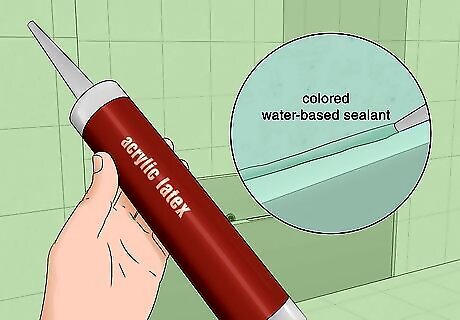
Use acrylic latex caulk if you need a colored water-based sealant. Acrylic latex caulk is easier to use and cheaper than silicone. It can be used for a wider range of projects and it comes in a rainbow assortment of colors to match bathtub and sink glazes. Acrylic latex is water-based so it’s best used indoors. It is not as durable as silicone caulk and won’t last as long. Since acrylic latex is water-based, it is possible to paint over it. Acrylic latex caulk shrinks up more than silicone. It also dries much harder. Unless specifically noted on the packaging, latex caulk isn't suitable for any exterior surfaces. Acrylic latex caulk is not suitable for tiling or areas with direct sunlight.
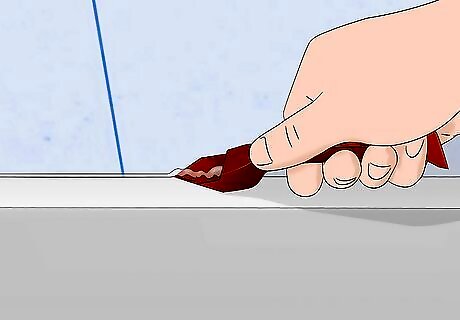
Remove existing caulk from your work surface. Old caulk must be removed before you add more. Use a utility knife, razor scraper or painter’s tool to cut away existing caulk. Use quick, sharp strokes. Keep in mind that metal blades aren’t ideal to use around plastic fixtures. Use a tool with a plastic razor blade, which you can get at any home improvement store, to avoid damaging the plastic. For concrete and masonry applications, use a wire brush for removal. Home improvement stores sell caulk remover products that will chemically remove old caulk. Keep in mind that these products will damage plastic surfaces. For silicone caulk, you may just need to rip up enough that you can grab an end with a pair of needlenose pliers. Then, you can pull the caulk out in one long strip.
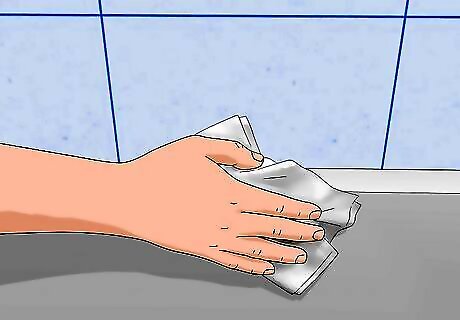
Clean the surface. Use a brush or vacuum to remove any remaining debris from the work area. Scour the surface clean with a dry, nonabrasive sponge or pad. Use rubbing alcohol to remove soap scum and body oils from a bathtub or shower stall. Dry the area completely before you begin caulking. Both kinds of caulk need a clean surface, but if you’re using silicone, it’s imperative that you remove all debris and residue from the surface before you begin. For silicone clean up, soak a rag with mineral spirits (such as turpentine) and wipe the surface down with it. Then use a damp rag to wipe the surface down again.
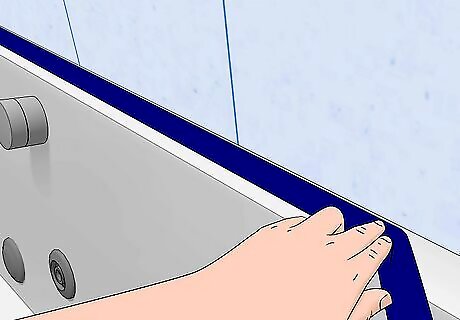
Use blue painter’s tape to mask off areas and ensure straight lines. Apply strips of the tape to protect any surface area where caulk shouldn’t appear. Put them down vertically on either side of the area you plan to caulk. The painter’s tape acts as a guide to ensure your caulk lines are straight and uniform. The end result will look more polished and professional if you use painter's tape.
Using a Caulk Gun
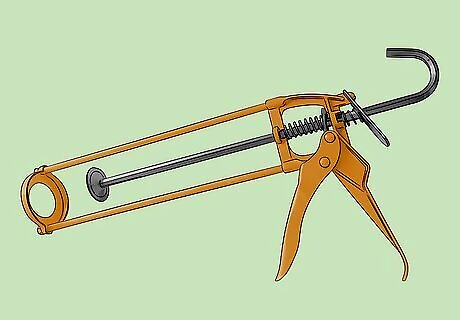
Get a high-quality caulk gun made of sturdy metal. Caulk guns cost between five and ten dollars at any home improvement store. Make sure you get one that is made of heavy duty metal. Solid-shaft caulk guns produce very smooth lines and generally get better results. Solid-shafts are a better choice than notched-shaft caulk guns.
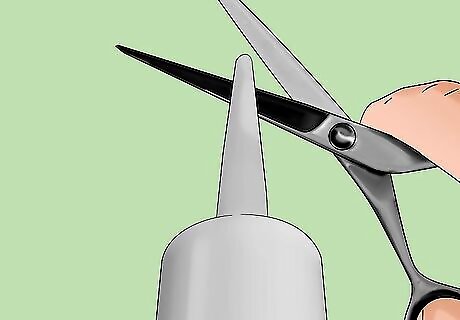
Cut the caulk tube’s nozzle to the desired bead size. Trimming the nozzle allows the caulk to flow freely out of the tube. You can control the size of the caulk line, also called the “bead,” when you make the snip. The further down on the nozzle you make the cut, the wider the bead will be. For quick, basic jobs, trim the end of the nozzle straight across. Cut the nozzle at a 45-degree angle if you need more precision and control. Check inside the nozzle for a foil seal. If it does have a foil seal, use something sharp and narrow (like a long nail) to puncture it.
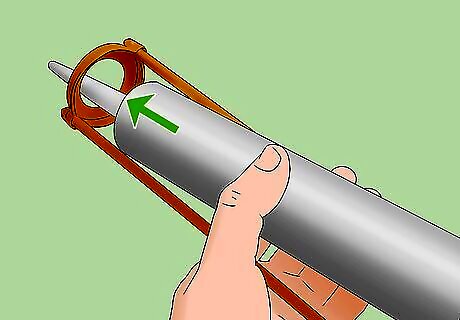
Insert the caulk tube into the gun. There will be a long, hooked rod on the end of the gun. Pull it all the way back. This will open up the gun so you can insert the caulk tube. Situate the tube base into the gun first. Then tilt the nozzle end of the tube into the top part of the gun. Turn the hooked rod so that the hooked part is facing up and the side with the teeth is facing down. Gently squeeze the trigger to get the caulk flowing and then it’s ready to use.
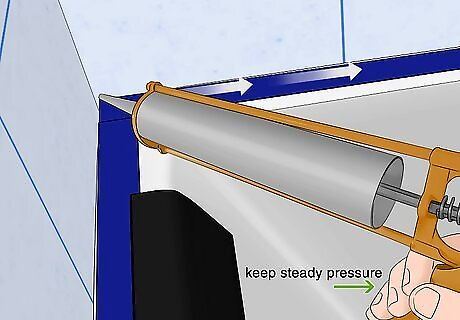
Place the nozzle tip on the spot where you need to begin caulking. Apply gentle and steady pressure to the trigger. Caulk will begin to flow. Pull the caulking gun along the line or area to be caulked. Keep squeezing the trigger gently as you go to ensure a continuous release of caulk. Move the gun at a steady speed. The caulk will form "beads" as it emerges. Try to get one continuous, even bead along each length. Keep a damp rag (dipped in water or mineral spirits) handy, for fast wiping of mistakes. To stop the flow of caulk, press the button under the shaft behind the needle. This will relieve tension to the gun and avoid a mess.
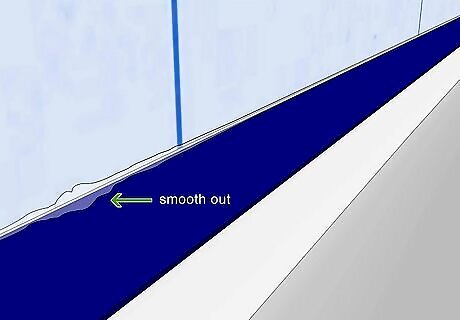
Check the neatness of your bead. Don't run the length of the bead any longer than around 5 feet (1.5 meters) before stopping and assessing your work for neatness. If the caulk bead already looks neat and uniform, leave it alone. If it needs to be smoothed out, use a caulking tool, a putty knife, your finger (dampen it first) or a damp rag to pull along the joint and press the caulk smooth. It is far easier to neaten caulk as you go, while it is still damp. Get to it within two to five minutes of application for best results. If you don't stop frequently to neaten the caulk, the earlier portions might dry before you can neaten or mend errors. You’ll have to scrape off dried caulk if you want to neaten it.
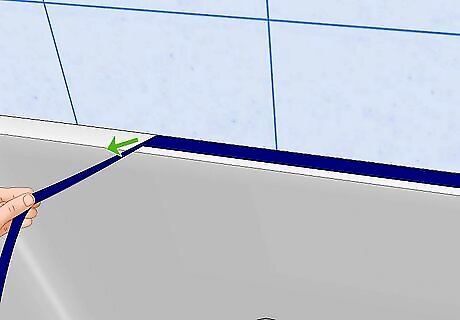
Pull the painter’s tape up. The tape needs to be pulled up before the caulk dries. Lift the edge of the tape up slowly. Pull it away from you and at a 45-degree angle. Do this carefully and try to avoid touching the fresh caulk. You can pull the tape up immediately after you create the bead if you like, but definitely get it up within a few hours. If you go any longer, the caulk could skin over. Allow the caulk at least 24 hours to cure before disturbing it or getting it wet.
Using Other Application Methods
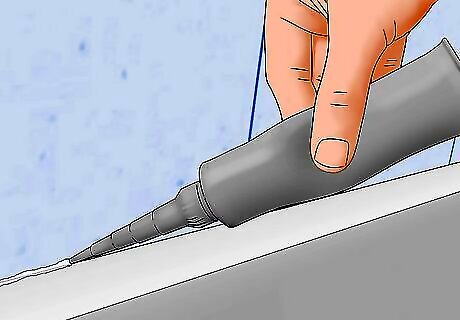
Use a squeeze tube for small, interior caulking jobs. A caulking gun isn’t necessary for all caulking jobs. Use 5 ounce squeeze tubes when you have a small, indoor project. Remove the cap from the squeeze tube, then trim the end off the nozzle with scissors. For the most control over caulk flow, cut the nozzle at a 45-degree angle. Squeeze the bottle with steady pressure so your bead will look uniform and neat.
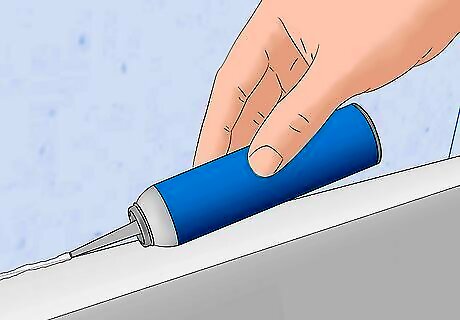
Caulk overhead with a pressurized can of caulk. Pressurized cans are usually about 7 ounces a piece. They are ideal when you need to create a uniform bead while you’re caulking overhead, or any other time you are caulking with only one hand. You should be able to obtain pressurized cans of caulk at any home improvement store.
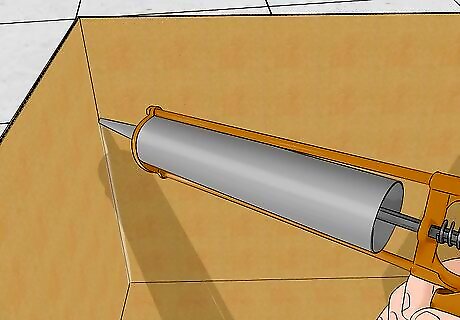
Practice applying caulk first. If you’ve never caulked before, it’s best to get a feel for how the caulk flows before applying it. Even if you have caulked before, it’s a good idea to get a feel for the specific caulk you’re using for this job. Practice by applying caulk on the inside corners of a cardboard box or on some other throw-away material. Work on creating a steady flow and uniform bead. Try using a caulk finishing tool as you practice. These give inexperienced home handy workers a more professional result. Once you’ve got the hang of it, move on to the actual caulking task.



















Comments
0 comment